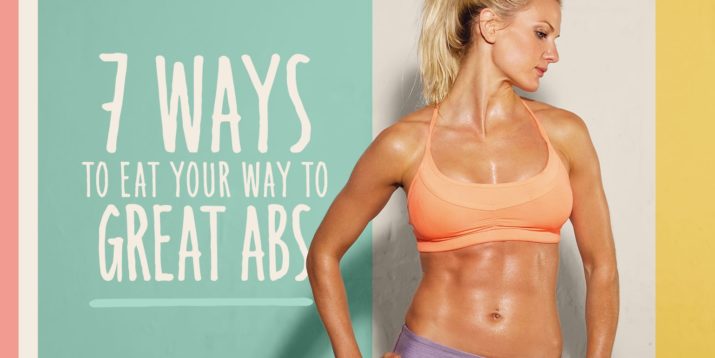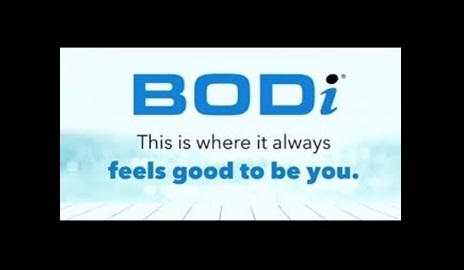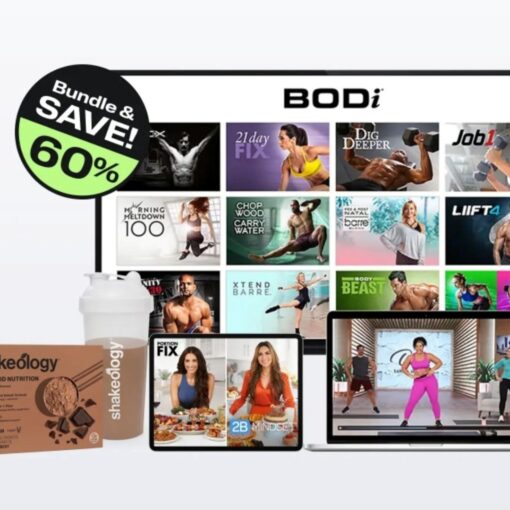The good news: You can get great abs by eating healthy.
The bad news: No matter how much physical effort you put into sculpting a smokin’ six-pack crunches, planks, squats, cardio, HIIT no one’s going to see them if they’re covered by a layer of flab.
7 Ways to Eat Your Way to Great Abs – from Ben Kallen and Beachbody

You’ve probably heard the phrase “abs are made in the kitchen.†Well, that’s about 50 percent true nutrition and exercise go together like Bey and Jay or Elizabeth and Philip; one without the other is “meh,†but for real fireworks/results, you need both. So if you’re already crushing the exercise portion of the equation, then all you need to do is get your nutrition in order.
But before we get to the good stuff, let’s get some basic midsection facts straight:
Get to Know Your Core
The foundation of a great set of abs is a strong core, which can help stabilize your entire body. Your core the muscles of your abdomen, lower back, and pelvis is a whole system of muscles that supports your body as you stand, walk, perform everyday activities, and work out. It’s important to strengthen all these muscles, not just your abs.
A strong core can help you get the most out of any workout: “A lot of our power and strength comes from the core,†says Joel Freeman, co-creator of CORE DE FORCE, a mixed martial arts-inspired workout.
In fact, the more you work your entire body, the better it is for your abs. Almost any full-body or compound movement takes a lot of ab work, which is why you can still get great abs from programs that don’t focus on crunches.
You CAN Target Belly Fat…
BUT: It depends on the kind of belly fat you have. There are two types subcutaneous fat and visceral fat.
Subcutaneous fat is a fancy name for your spare tire/muffin top. You can’t target or spot reduce this kind of fat. But if you reduce your overall body fat with a healthy, balanced diet and exercise, you’ll lose the tire muffin and reveal the glorious abs you’ve been working on.
Visceral fat is the name for the kind of fat that is deep within your torso, building up primarily around your stomach, intestines, and liver. It’s also called “deep belly fat,†which has been linked to various health issues. You can target this type of fat by eating more fiber, less carbs, and getting more exercise and sleep.
Bottom line: If you’re following the nutrition guidelines of a Beachbody fitness program, you’ll be eating the right foods to lose fat at the same time that you’re getting in shape. But the following seven tips can give you an extra edge, and will ensure that all the effort you’re putting into your abs will get you the results you want.
1. Eat Plenty of Protein
Eating enough lean protein promotes fat loss and muscle gain, the two most important elements for developing great abs.
Protein is a great way to start your day: A protein-rich breakfast can help keep your blood sugar steady, preventing those dips that can lead to snack binges later in the day. Eating breakfast isn’t “magic bullet†for losing weight, but it sets a healthy tone for the day.
A balanced meal combination that won’t leave you craving junk food or empty calories is roughly 40 percent carbohydrates, 30 percent protein, and 30 percent fat. If you’re having a hard time getting enough protein in your diet, adding in a daily shake can help you get the job done.
Pro tip: It’s no fun doing math, so if you want to make sure you’re getting enough protein at each meal, try using portion-control containers.
2. Fewer Carbs, More Fat
Believe it or not, the worst offender when it comes to belly fat isn’t actually fat it’s refined and processed carbs. So say sayonara to soda, ditch the junk food, and save the cake for your birthday.
The carbs in these belly busters are quickly broken down into tiny sugar molecules that trigger your pancreas to get in on the action. The pancreas releases insulin to escort these blood sugars to your liver and muscles for fuel. But if there’s too much blood sugar (we’re looking at you, birthday cake and soda), then insulin converts the excess to body fat.
To keep your blood sugar levels at steady, healthy levels, stick with carbs that also contain fiber, like fruits, vegetables, grains, nuts, and other foods that are broken down more slowly.
But about that fat thing…. more is better? Yup. Well, more healthy fats, like the unsaturated fats found in avocados and salmon. In the battle against the bulge, unsaturated fats are a valuable weapon: These types of fats can help you feel full for longer and slow the absorption of the aforementioned carbs.
3. Get Your Fiber
Something about the word “fiber†just doesn’t sound appetizing. But high-fiber foods are actually delicious: think fresh berries and fruits, colorful and crunchy salads, roasted vegetables, savory stews and chili made with beans, chewy whole-grain breads you get the picture.
High-fiber foods keep you fuller with fewer calories, keep your digestive system working at its best, and helps maintain healthy blood sugar levels.
Need more proof? An analysis of food diaries of MyFitnessPal users showed that people who successfully lost weight and came closest to their goals ate 30 percent more fiber than their less successful counterparts.
Pro tip: Get your fiber on with these delicious high-fiber recipes.
4. Eat More Yogurt
Research shows there’s an “inextricable link†between the bacteria milling around in your gut and your metabolism and digestion. For example, a study on identical twins one overweight and one thin showed that they had entirely different gut microbiota, suggesting certain bacteria may promote weight gain.
Yogurt (and other fermented foods like kombucha) contain probiotics, the healthful bacteria that live in your gut and can help you reduce belly fat. Studies also suggest that eating calcium-rich dairy foods may increase overall weight loss.
5. Don’t Forget to Eat
Tempted to lower your daily calorie count by skipping meals? Don’t. Going hungry can raise your levels of the stress-related hormone cortisol, which can contribute to weight gain.
Eating too little can also slow your metabolism and dampen your energy levels, while increasing the chance that you’ll get too hungry and chuck your meal plan entirely. If you’re eating the right foods, regular meals and snacks will keep your body fueled while you’re working toward that strong core.
To make sure you’re eating enough to meet your weight-loss goals, figure out how many calories you need to consume to maintain your current weight, then subtract 500 calories:
– Sedentary: Multiply weight in pounds x 12, then – 500
– Moderately active: Multiply weight in pounds x 13, then – 500
– Highly active: Multiply weight in pounds x 14, then – 500
Note: The final calorie total should be above 1,200 anything lower can be dangerous in the long term.
6. Drink More Water
Hydration is important when you’re on a fitness plan, but drinking plenty of water has particular benefits for your midsection. It helps keep your stomach full and it helps flush out excess sodium to prevent belly bloating.
How much water do you need to drink? Beachbody recommends using your body weight as a general guide to get started: Drink your body weight, divided by two, in ounces. So if you weigh 150 pounds, that would be 150 divided by 2, which equals 75. That’s 75 ounces of water you should be drinking every day.
But keep in mind that everyone is different: You may need to drink more if you’re exercising frequently or it’s hot out, or drink less if you’re running to the bathroom every five minutes. And if you can’t remember how much (or how little) you’ve had to drink, don’t worry: Your body will give you can’t-miss signs that you need more, like a lack of focus and cramps.
7. Cut Down on Liquor
Sorry folks, but this is one of those times when you’ve got to cut down on the hooch. The proverbial beer belly isn’t just the result of extra (and empty) calories alcohol can impair your body’s ability to digest, absorb, and store the valuable nutrients from the food you’re eating. Booze also stimulates your appetite and lowers your inhibitions, which can lead to overeating.
The best road to a flat belly is no alcohol at all, but you can still enjoy the a drink or two while you’re on a program. Just be aware of what the dos and don’ts are, like skipping the sugary mixed drinks and drinking plenty of water while you’re tippling.
If you add these tips to your program, you’re sure to see noticeable improvements in your midsection. Of course, there’s an added bonus to eating this way: It’ll keep you healthier in the long run, too.




